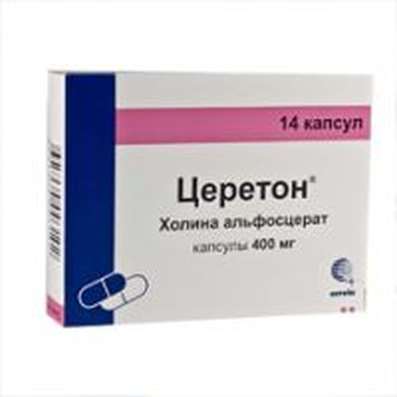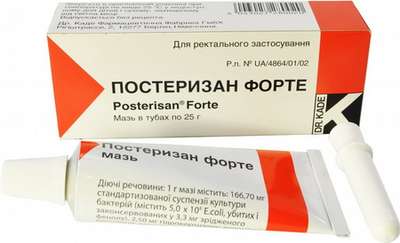Meet the most important molecule - DNA
14 Dec 2016
About DNA molecules of the device, its physical properties and repaired systems.
It looks like a corkscrew ...
Plan how to get every one of us, ready at a moment when the sex cells of our parents, moms and dads, are merged into one, called a zygote or fertilized egg. Plan concluded in the nucleus of a single cell, in its molecule DNA, and it means a lot: and what will be the color of our eyes and hair, and how high will increase, and what form the nose, and how thin - ear for music and many many others. Of course, our future depends not only on DNA, but simply from the vicissitudes of fate. But very, very much in our fate is determined by the qualities laid down from birth, our genes, t. E. The sequence of nucleotides in DNA molecules. (Cyanocobalamin injection is essential for DNA making.)
DNA doubles with each cell division, so that each cell carries information about the structure of the whole organism. It is as if kept miniature plan of the building in every brick building. That would be the architects for a long time so did! Then the restorers would not have to rack their brains, say over how the look once the Pergamon Altar, even if it remained a single stone of it.
The fact that the specialized cells of the whole organism actually knows what's inside the entire body, was first demonstrated in the late 1950s, the British biologist John Gurdon. He took the cell nucleus of an adult frog and using the finest microsurgical technique, transplanted it into the frog eggs, which a custom kernel have been killed by ultraviolet irradiation. From hybrid eggs grew normal tadpole or frog - is absolutely identical to the one whose cell nucleus was taken. Nature itself sometimes creates such twins. It turns out, when you do not stay together, and diverge after the first division of the zygote daughter cells and is obtained from each organism. So are born monozygotic,or identical, twins. The twins are exactly the same DNA, so they are similar. At the end of the last century, the British zoologists managed to apply the technique G¸rdona mammals: the cloning era began. First method of cloning has been successfully obtained a sheep named Dolly, which became a real celebrity. DNA to Dolly was taken in the form of the cell nucleus, seized from the udder of some sheep, which did not live up to the birth of his twin. This core has been transplanted into an egg extracted from the other sheep, from which the (egg) its nucleus has been removed. Then a hybrid cell carrying a foreign nucleus put back where it removed. As a result, and Dolly was born, a complete copy of the sheep, which supplied DNA. Dolly lived six years and died. Meanwhile clones were obtained by many other animals, and from time to time the news flies around the world on human cloning. But so far none of these posts (human cloning) has not been confirmed, and the messages came from the obvious quacks.
Either way, the success of the experiments in cloning leaves no doubt that the DNA of the nucleus is fully determines who will in the course of development of an organism from a single cell.
How it is arranged DNA molecule, this queen of a living cell? It is not a simple rope ladder, as you might think, looking at the picture. This ladder is curled into the right spiral. It resembles a corkscrew, but a double corkscrew; They are rare, but occur. Each of the strands of DNA forms a right helix, a hair's breadth as a spin. Nitrogenous bases of four types, in which the sequence and the genetic information is contained, form a sort of filling this corkscrew cable. On the surface of the cable is the sugar-phosphate backbone of the polymer chains that make up DNA.
The monomeric units of which DNA is built, it is very similar to the monomeric units of RNA, the chemical structure of which is shown in Fig. 6. We will not be so again to draw all four nucleotides, just show what it looks like T nucleotide, which is the most different from its counterpart RNKovogo - W. Note that the top ring is called a nitrogenous base, a five-membered ring - sugar and a phosphate group on the left is .
What are the main dimensions of the DNA? Double helix diameter 2 nm, the distance between adjacent base pairs along the helix - 0.34 nm. Overall turnover of the double helix makes 10 pairs. But the length? The length depends on the DNA of any organism belongs. DNA is the simplest viruses contain only a few thousand units of bacteria - a few million, and higher - billions. (Vitamin B12 injection is necessary for DNA synthesis).
If the build up in one line all DNA enclosed in only one human cell, we get the thread length of about 2 m. Therefore, the length of the filament in a billion times larger than its thickness. To better imagine what this means, imagine if the DNA is actually twice as thick as in Fig. 8 -. About 4 cm Such DNA taken from a human whole cells could encircle the globe at the equator. At this scale, the cell nucleus is the size of the stadium, and the person - it is the globe.
It is clear that one of the very serious problems in multicellular organisms, especially where very long DNA molecule, the molecule is laying it to fit into the cell nucleus. Lay, then it should be so that the DNA was available for the entire length of the proteins, such as RNA polymerase, reading the desired genes. Another problem - the replication of such long molecules. In fact, after the DNA double the two complementary strands, which were originally repeatedly twisted relative to one another, must be diluted. This means that the molecule need to scroll around its axis million times before the end replication. It follows that the questions generated by the work of Watson and Crick, is not limited to the problem of the genetic code, and related things.
These questions gave rise to doubts. Did Watson-Crick model is correct? How reliable is the foundation upon which all the data of molecular biology? Watson-Crick model was so concrete, so detailed that downright teasing their vulnerability. It was enough to find at least one clear fact, contrary to her that the double helix was dropped from the pedestal. It was a challenge for physicists, and they set to work.
If each DNA molecule actually consists of two polymer chains, some argued, and these chains are linked together by weak non-covalent forces, they must disperse solution by heating DNA, it is possible to accurately fix the experiment. If nitrogenous bases in DNA actually form one another hydrogen bonds, others reasoned, it can be checked by measuring the DNA spectra in the infrared region or exploring the exchange rate of the ordinary (light) hydrogen on a heavy (deuterium). If the inside of the double helix is indeed hidden away nitrogenous bases, others argued, it is possible to determine whether the act on DNA are substances that are capable of reacting only with these, to hide groups. These and many other experiments were carried out. By the end of the 1950s it became clear - the model has withstood the first test. Attempts to refute it have failed one after another.
It is like a window pane
Physicists do the study of DNA, not only because they understood the importance of checking all the details of its structure. The DNA molecule is attracted their attention in and of itself.
DNA looks like a solid body. bases pairs are stacked therein in a crystal. But this linear crystal, like a one-dimensional - each base pair has only two neighbors. DNA crystal - aperiodic, as a sequence of pairs of irregular bases as irregular sequence of letters in a meaningful text books. However, like the letters in the printed font base pairs A and D T • D • have the same dimensions both in width and in height.
Of course, an entirely new type of crystal, one-dimensional crystal of DNA, it is terrible intrigued physicists. Is he a semiconductor? And maybe superconductor, and even at room temperature? DNA was subjected to the next survey. No, it is not a semiconductor, much less is not a superconductor. She was an ordinary insulator, such as window glass. Yes and it is transparent like glass. The aqueous DNA solution (and it dissolves in water very well) a clear liquid. This similarity does not end with the glass. Ordinary glass, including a window transparent to visible light and very strongly absorb ultraviolet rays. DNA also absorb in this region of the spectrum. However, unlike glass, which is not harmful UV rays, the DNA is very sensitive to them. (Use Cyanocobalamin to feel good).
Ultraviolet rays are so harmful to the DNA molecules that the cell has developed during the evolution of a special repaired system that heals the damage caused by these rays. What kind of damage?
When a photon of ultraviolet radiation (photons) hits the DNA, it transfers its energy to a nitrogenous base. The base is in an excited state. Further events can unfold in different ways. If the photon is absorbed purine (adenine or guanine), nothing much will happen - the energy absorbed quickly turn into heat (as it happens in the window), and the DNA will remain the same as it was. Another thing, if the photon is absorbed by a pyrimidine (thymine or cytosine), and not by anyone, but one that is adjacent to the circuit with another pyrimidine. In this case, the absorbed energy is not yet time to turn into heat as two adjacent pyrimidine react chemically. This process is particularly effective when the two are adjacent thymine. The result - a new chemical compound, called thymine photodimers.
The structure of the dimer is rather unusual. In fact, carbon is generally tetrahedral or when it bonds with neighboring atoms are of tetrahedral vertices in its center, or a triangle, when the communication lie in one plane and directed from the center to the vertices of a regular triangle. But photodimers two bonds each carbon atom participating in the clutch thymine form a right angle! And all four carbon atoms form a square (it is called cyclobutane).
So, in the DNA damage occurred - instead of two thymine formed a completely new chemical compound, which reached the enzymes that work on DNA, stop. They know only four letters: A, T, G and C, and then some new TàT icon. They do not know it. If this does not rectify the blot is not clear from the text, the enzymes can neither be removed from the DNA copy or consider information from it (to synthesize RNA). The entire life of a cell will stop and she will die.
Ultraviolet rays are such a serious threat to the DNA molecules in the course of evolution has developed a special cell to deal with DNA damage caused by this radiation. Enzymes of the repaired systems come to the rescue. First, the enzyme UV endonuclease recognizes thymine dimers and tears in this place the sugar chain. Next exonuclease enzyme extends arising gap. In one of the strands of DNA, where thymine dimers formed, it turns out a huge gap - several thousand nucleotides. In this case not only are remote thymine dimers, but also plenty of normal nucleotides, as they say, just in case. But it does not matter - the other, complementary strand remains intact, and on it a special enzyme, DNA polymerase I, builds on the second strand, creating a normal double helix identical to the original, undamaged DNA.
So, it turns out, what the meaning of double-stranded DNA! It is necessary not only to create two identical copies of the genetic material, but also to information contained in the DNA can be saved from damage. If there was a single-stranded, then it would be impossible to fix the DNA duplication between cycles.
Repaired systems exist in all cells, from the simplest to man. This is not surprising - life began under the sun. It may seem strange that the repaired system is active even in those cells which are never experience the action of solar radiation - for example, intestinal cells. An ingenious explanation offered GM Barenboim. He suggested that the DNA is protected from the Cerenkov radiation, which occurs in the cells of the decay of natural radioactive elements impurities.
If the mutation is repaired the system fails - it's a disaster. Sometimes children are born with a defect called xeroderma pigmentozum. They are absolutely can not be the light - their skin covered with sores, which gradually turn into malignant tumors. These children can not be saved, even carefully protecting them from the sun. Generally, direct experiments on animals showed that thymine dimers can cause cancer.
So, to sunbathe - it really is not an innocent activity. Of course, we can not deny myself this pleasure, but do not overload the repaired system. In addition, the repair - not completely harmless thing. It is believed that the enzymes of the system are repaired, especially DNA polymerase I, tend to make mistakes, so that repair can lead to mutations. A somatic mutation (ie. E. Occurring in the cells of the body no pun intended) are also considered as an important factor leading to malignant tissue degeneration.
That's how much hassle from what DNA is sensitive to ultraviolet rays. But these rays hardly reach the earth's surface, most of them are absorbed by the atmosphere. So whether regret that DNA transparent as window glass in relation to the visible spectrum?
It melts but not like ice
And yet those who were waiting on the DNA molecules of unusual physical properties, were rewarded. Dimensionality and aperiodicity DNA chip is fully manifested in its melting. But if the crystalline state of the DNA - it is clear that this, how to submit it to the transition to a liquid? In what may become one-dimensional crystal of DNA during melting? To understand this, let us recall why the ice is melting.
Ice is a crystal built of H2O molecules. It is quite a strict order in which the water molecules are bonded to each other the greatest possible number of so-called hydrogen bonds (H-bonds): HO-H ... OH2. These are the H-bonds, which are formed in complementary base pairs A • T • C and D. Some of these bonds are broken, others are deformed when passing water in liquid state. What causes the water to be liquid at a temperature above zero Celsius? Losing part of the links by loosening the other, the water molecules acquire the ability to move more freely (move and rotate), it becomes very advantageous with increasing temperature. With even greater heating of the water molecule for complete freedom sacrificed last communication with each other - there is a transition from a liquid to a gaseous state. This is a general trend. With increasing temperature of the substance are willing to sacrifice the binding energy between molecules in order to increase the entropy.
All this is fully applicable to DNA - the existence of a rise in temperature of the double helix becomes uneconomical. Intermolecular bonds, H-bond within base pairs and the so-called stacking interactions between adjacent pairs along the chain holding the two complementary strands are near each other, torn, and one of the double-stranded molecules of the two single-stranded chain is formed. Entropy (m. E. In the sense of obtaining greater freedom) is beneficial because, without being bound to a complementary partner, each chain feels much freer can take much more space in various configurations.
DNA strand break themselves simply heating impossible - the bonds joining the nucleotides in the chain are so strong that they can be destroyed either a strong acid or nuclease enzymes cut.
Despite the analogy, the DNA melting fundamentally different from the melting ice. The difference is that DNA melting occurs over a wide temperature range; this interval is equal to a few degrees, and the ice melting occurs strictly at one point on the temperature scale. This so-called phase transition. In this transition phase abruptly changes the state of matter - a solid it becomes a liquid, a liquid - gas.
Every day we are faced with a phase transition when the boil kettle. In the process of boiling water-steam system is at the point of phase transition - the kettle temperature iota does not exceed 100 ° C until all the water boils away. The same will happen when heat ice or snow. The temperature rises to 0 ° C, then the growth will stop until all the ice has melted completely, and then the temperature will go up again. Unlike phase systems, in DNA the temperature rises continuously, and with it an increase in new areas of the helical molecules pass into the molten state. I wonder what the difference is - a direct consequence of one-dimensionality of the DNA chip. Realize that this behavior may matter, physicists have begun even before the Second World War, when not thinking about DNA or the real one-dimensional crystals. Just could not manage to build a complete theory of phase transitions in these three-dimensional crystals (it happened only much later - in the 1970s), and the idea that it might be possible to do it at least for one-dimensional or two-dimensional crystal.
But the melting of the DNA - is not just a unique natural phenomenon. It is a process that is constantly happening in the cell. In fact, the doubling and DNA, and in reading information from its complementary chain should be routed to each of them (for replication), or one of them (in the case of transcription) began DNA synthesis or RNA chains. Cyanocobalamin injection - helps in DNA making.
How divorced chain? What plays the role of iron that can melt a region of DNA? This special role is played by enzymes, in particular RNA polymerase. The enzyme binds tightly to DNA and unwinds it, but not at any site of the molecule, and a specific nucleotide sequence, a promoter located between the genes. Once the RNA polymerase linked to a promoter and melt it (opens about ten nucleotides), it begins to move along the gene, untwining on its way all new sites and conducting synthesis of mRNA molecules. Those portions of the gene from which the polymerase is "slid" slam shut again, and the synthesized RNA molecule is suspended in the solution. To it swims up the ribosome and protein synthesis begins by the laws of the genetic code.

 Cart
Cart





